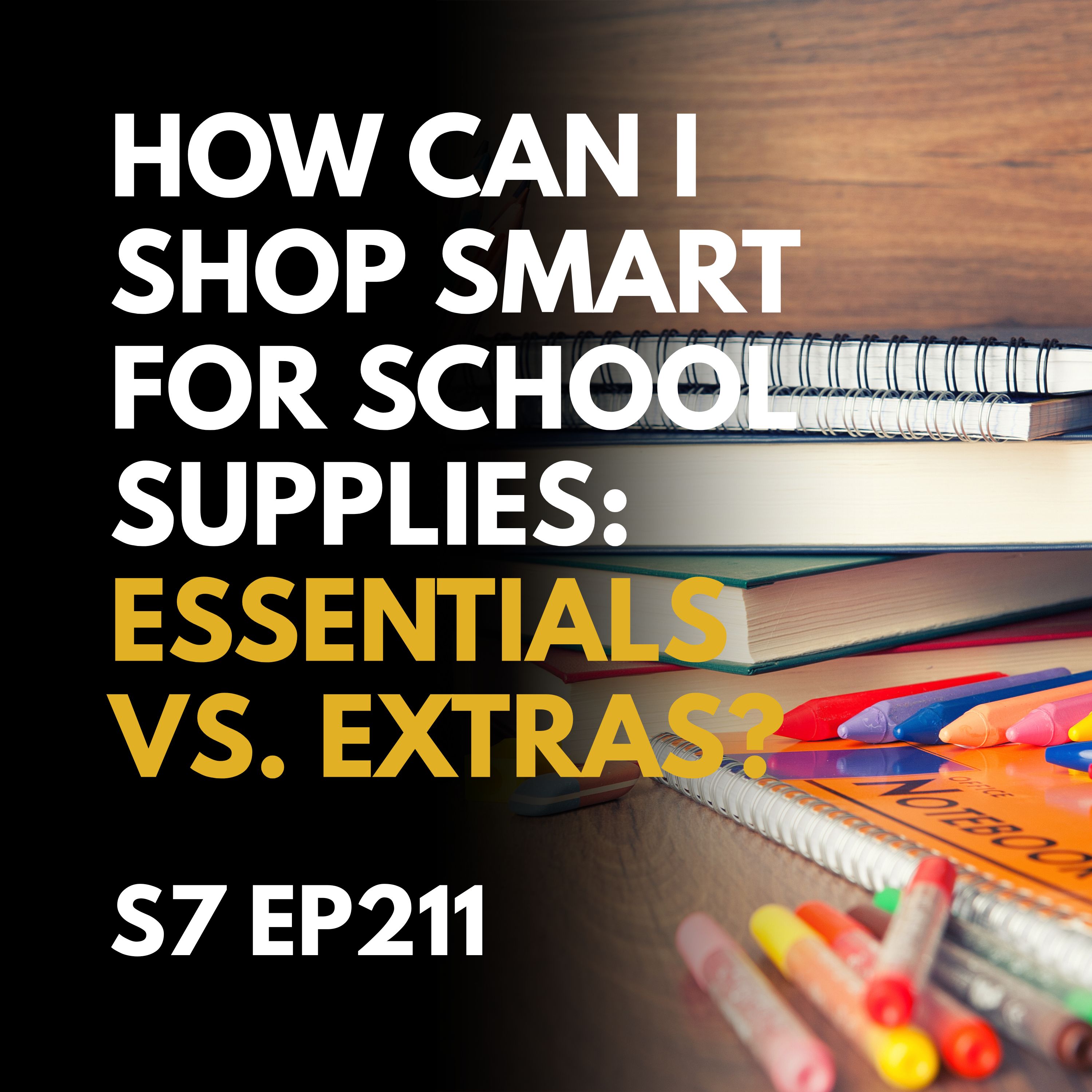What Are the Essential School Supplies vs Extras?

Introduction: A Stewardship-Minded Approach to Back-to-School Shopping
The back-to-school season is both exciting and financially demanding. For Christian families, this time calls for intentional stewardship—not just cost-cutting but aligning spending with biblical values. This guide equips families to discern essentials from extras, manage budgets wisely, and use the season to teach kids financial responsibility and spiritual stewardship. What Are the Essential School Supplies vs Extras?
1. Defining "Essentials": What Students Truly Need
Start with the School Supply List
The most reliable guide to what students need comes from the school or teacher. Review these lists carefully—some items are required, others are merely suggested. Some schools even specify brands for quality and classroom compatibility.
Grade-Level Essentials
-
K–2nd Grade: Crayons, glue, scissors, wide-ruled notebooks, folders, rulers, and shared classroom supplies like tissues.
-
3rd–5th Grade: Add highlighters, loose-leaf paper, binders, and calculators.
-
6th–8th Grade: Subject-specific folders, graph paper, dividers, pens, compasses, and possibly a graphing calculator.
-
9th–12th Grade: Specialized calculators, college-ruled paper, individual binders per class. Supply costs can reach $150–$200+.
Core Supplies Across Grades
Some items remain essential throughout all years: backpacks, pens, pencils, erasers, notebooks, rulers, and a pencil case or pouch.
2. Identifying "Extras": Helpful Additions vs. Budget Busters
Important Extras That Add Value
-
Study Tools: Highlighters, sticky notes, index cards.
-
Organization: Planners, earbuds, USB drives.
-
Creativity/Subject Tools: Colored pencils, dry-erase markers, red pens.
Digital Tools
-
Laptops/Tablets: Often essential by high school or college; families can save through rental programs or campus computer labs.
-
Apps: Tools like MyStudyLife and grammar checkers enhance productivity.
-
Storage: Flash drives or cloud apps are helpful for assignments.
Wellness Items
Sanitizers, water bottles, tissues, and masks support focus and reduce illness.
3. Smart Budgeting Strategies: Saving with Stewardship in Mind
Start with What You Have
Audit last year’s supplies. Personalize older items to give them new life. Avoid replacing items that still work.
Make a Family Budget
Involve children in budgeting for their supplies. Teach them to prioritize essentials over wants and set spending limits. Older children with allowances can help pay for discretionary items.
Take Advantage of Sales and Timing
-
Sales Cycles: Shop July–August for peak deals, and late August–September for clearance.
-
Tax-Free Holidays: Many states waive taxes on supplies during certain weeks.
-
Electronics: Shop during Amazon Prime Day, Black Friday, or Back-to-School sales for deep tech discounts.
-
Clothing & Shoes: Buy basics during back-to-school season; wait on trends.
-
Backpacks: Heavily discounted after September.
Where to Shop Strategically
-
Price Matching: Use competitors’ ads to get the best deal.
-
Bulk Buying: Great for large families or supply-sharing; be mindful of storage.
-
Dollar Stores: Great for basics, but invest in quality for high-use items.
-
Online Retailers: Use cashback apps and retailer-specific coupons.
4. When to Splurge and When to Save
Invest in Quality When It Matters
Durable backpacks, binders, and writing tools from brands like Crayola or Ticonderoga may cost more but last longer—reducing replacements.
Save on Everyday Consumables
Opt for generics for things like erasers, folders, or notebooks—unless a specific brand is required. Evaluate each item’s usage and impact on learning before deciding.
5. Think Outside the Store: Creative and Community Solutions
Reuse, Repurpose, and DIY
-
Check for reusable supplies at home.
-
Upcycle household items (e.g., jars for pencil holders, DIY organizers from cardboard).
-
Get kids involved in decorating reused items—it builds creativity and ownership.
Secondhand Options
-
Thrift Stores: Offer gently used supplies and uniforms.
-
Online Marketplaces: Buy or sell used supplies and clothing.
-
Uniform Drives: Schools often host secondhand uniform exchanges.
Textbooks: Buy used or digital versions, especially for high school and college. Sell old textbooks for extra cash.
Community Support for Struggling Families
-
School Programs: Some districts offer support or connect families with donors.
-
Nonprofits: Salvation Army, United Way, Boys & Girls Clubs, and more offer free school supplies.
-
Foundations: KINF and Operation Homefront serve low-income and military families.
-
Churches & Community Centers: Often host local supply drives or giveaways.
6. Teaching Stewardship: Financial Discipleship for Children
Budgeting Lessons from Real Life
Involve children in budgeting decisions for their own supplies. Help them understand the difference between a “want” and a “need.”
Empowering Kids with Choices
Set a discretionary budget for “wants” so kids can make their own value-based decisions. If they overspend on one item, they learn to adjust expectations elsewhere.
Financial Contributions
Teens with jobs or allowances can chip in. This builds accountability and prepares them for real-world money management.
Build Habits for the Long Term
Create a monthly school expense fund. This cushions against emergencies and helps plan for big-ticket items (e.g., calculators, extracurricular fees).
Conclusion: Cultivating Confidence through Christ-Centered Stewardship
With planning, discernment, and intentional stewardship, back-to-school shopping becomes more than a routine chore—it becomes a teaching moment and a spiritual discipline. Families can navigate this season with financial confidence, ensuring children are prepared without overextending resources.
By integrating faith-based stewardship, budgeting wisdom, and family collaboration, households can honor God with their finances, empower their children with lifelong money habits, and support one another through both abundance and constraint. Whether you're stretching every dollar or shopping from surplus, the goal remains the same: steward well, educate faithfully, and build financial confidence rooted in Christ.













